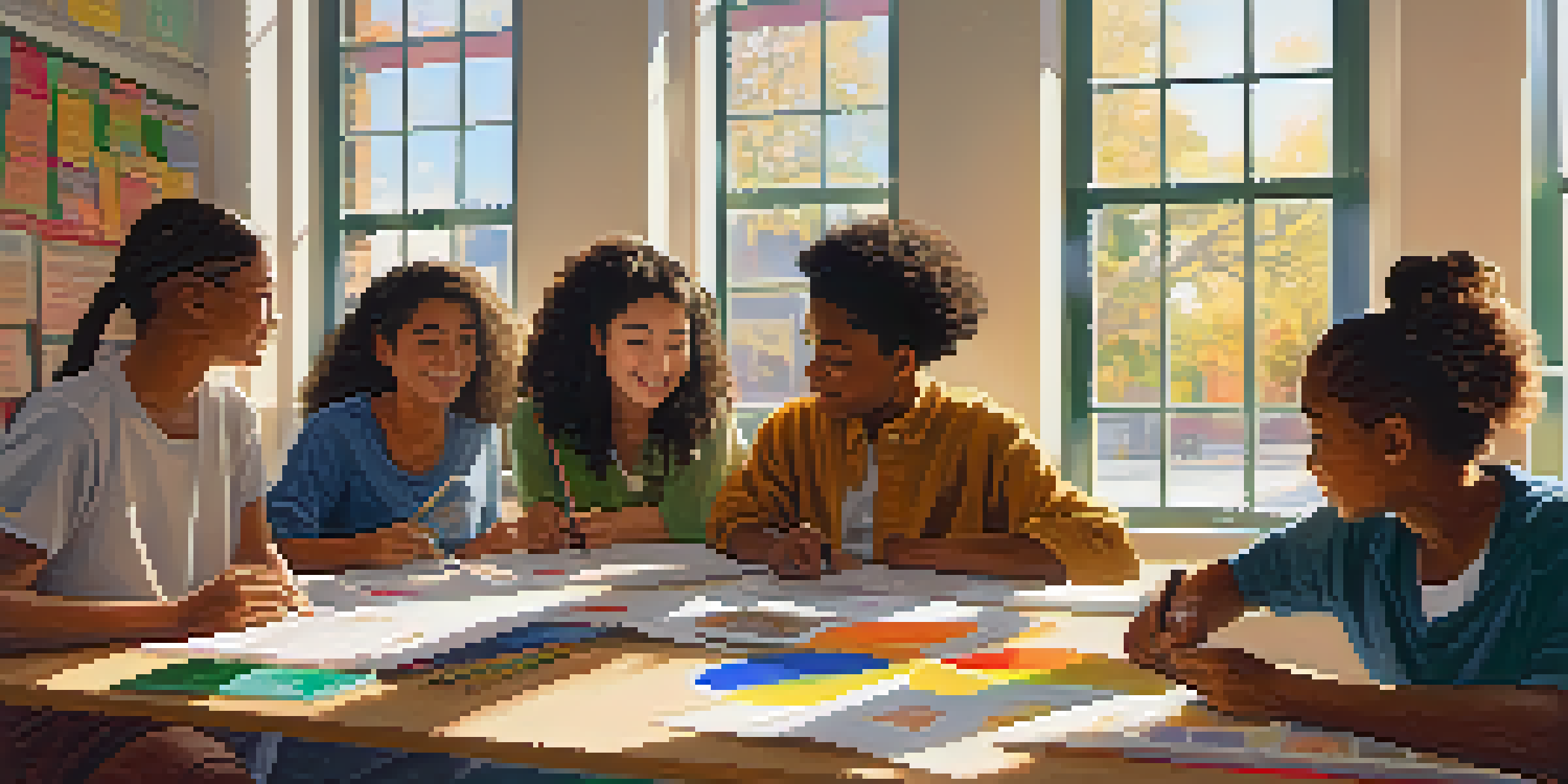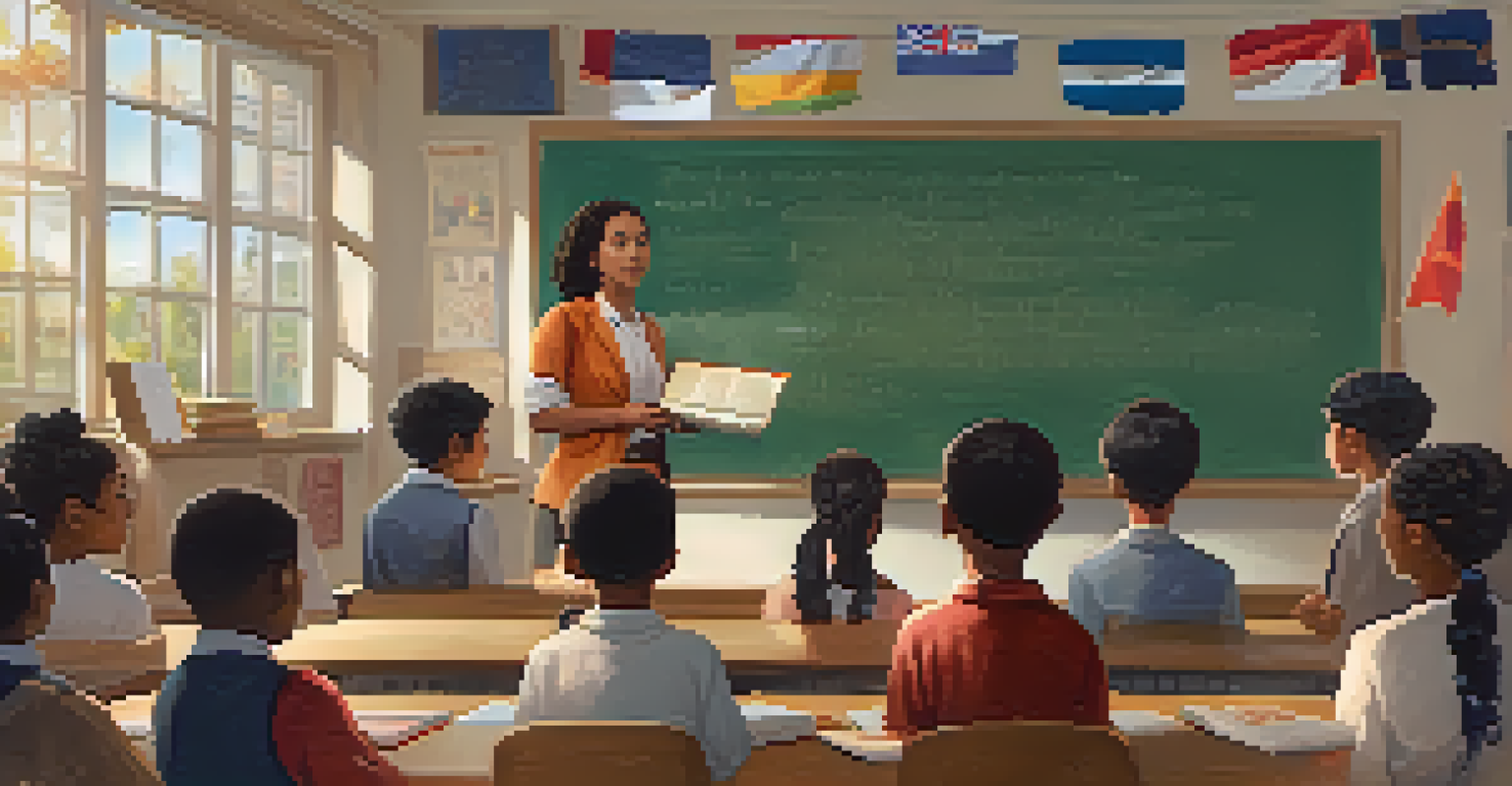Teaching History Through a Culturally Responsive Lens

Understanding Cultural Responsiveness in Education
Culturally responsive teaching is about recognizing and valuing the diverse backgrounds of students. It encourages educators to incorporate students' cultural references into the learning experience. This approach not only fosters a sense of belonging but also enhances engagement and academic achievement.
Education is the most powerful weapon which you can use to change the world.
When teachers understand their students' cultural contexts, they can create more relatable and meaningful lessons. This understanding allows them to bridge gaps between the curriculum and students' lived experiences. As a result, history lessons can connect past events to students' present realities.
For instance, discussing historical events through the lens of students' cultures can make those events come alive. Instead of viewing history as a list of dates and figures, students can see how their cultures have influenced and been influenced by historical movements.
The Importance of Diverse Historical Perspectives
History is often told through a singular lens, which can marginalize the experiences of various cultures. By integrating multiple perspectives, educators can provide a richer and more accurate narrative of history. This diversity not only honors the voices of underrepresented groups but also encourages critical thinking among students.

For example, when studying the American Civil War, it’s vital to include perspectives from African American, women, and Indigenous peoples. This inclusion helps students understand the complexities of the past and the interconnectedness of different cultural experiences. It also fosters empathy and respect for diverse backgrounds.
Value Diverse Student Backgrounds
Culturally responsive teaching recognizes and incorporates students' diverse backgrounds, fostering engagement and academic success.
By presenting history as a tapestry of intertwined stories, students can appreciate the nuances of human experience. This approach challenges them to think critically about whose stories are told and whose are left out, prompting deeper discussions about identity and power.
Implementing Culturally Relevant Teaching Strategies
To teach history through a culturally responsive lens, educators can employ various strategies. One effective method is the use of project-based learning, where students explore historical events related to their own cultures. This approach not only makes learning more engaging but also empowers students to take ownership of their education.
The beautiful thing about learning is that no one can take it away from you.
Another strategy is to incorporate literature and narratives from diverse cultures. Books, essays, and oral histories can enrich the curriculum and provide students with varied viewpoints. For instance, reading narratives from different cultural backgrounds related to the same historical event can highlight the diversity of experiences.
Additionally, inviting guest speakers from diverse backgrounds can bring history to life. Hearing firsthand accounts can deepen students' understanding and appreciation of different historical perspectives, creating a more immersive learning experience.
Creating an Inclusive Classroom Environment
An inclusive classroom environment is essential for culturally responsive teaching. This means not only acknowledging diversity but actively promoting it through classroom practices. Teachers can create a welcoming atmosphere by displaying diverse cultural artifacts and resources that reflect the students' backgrounds.
Establishing ground rules for respectful discussions can also foster inclusivity. Encouraging students to share their perspectives and experiences helps build a sense of community. This shared space allows for open dialogue and learning from each other’s cultural backgrounds.
Incorporate Multiple Perspectives
Integrating diverse historical narratives promotes critical thinking and empathy among students, enriching their understanding of history.
Moreover, recognizing and celebrating cultural events within the classroom can reinforce students' identities. Observing cultural holidays and traditions can create a richer educational experience while making every student feel valued and respected.
The Role of Family and Community in Education
Engaging families and communities is vital in culturally responsive teaching. Teachers can collaborate with families to better understand their cultural backgrounds and values. This partnership can lead to more relevant and effective teaching strategies tailored to the community’s needs.
Involving community members as resources can also enhance the learning experience. Local historians, cultural leaders, or artists can offer unique insights that textbooks may not provide. This connection to the community helps students see the relevance of history in their own lives.
Furthermore, hosting cultural events or history fairs can bridge the gap between school and home. These activities encourage families to participate in their children’s education and showcase the rich diversity within the classroom.
Assessing Student Learning through a Culturally Responsive Lens
Assessment is an important aspect of teaching history, and it should reflect the diverse learning styles of students. Instead of relying solely on traditional tests, teachers can use a variety of assessment methods. These can include projects, presentations, or reflective journals that allow students to express their understanding in culturally relevant ways.
For instance, students could create a multimedia project that showcases their cultural heritage and its historical significance. This not only assesses their understanding of history but also values their cultural contributions. Providing diverse assessment options acknowledges that students learn in different ways.
Engage Families and Communities
Collaborating with families and community members enhances culturally relevant teaching, making learning more meaningful and connected to students' lives.
Regular feedback that highlights cultural strengths can also motivate students. When educators recognize and celebrate students' unique perspectives, it fosters a growth mindset and encourages a lifelong love for learning.
Challenges and Solutions in Culturally Responsive Teaching
While implementing culturally responsive teaching can be rewarding, it’s not without challenges. One significant hurdle is the potential lack of resources or training for educators. Many teachers may feel unprepared to address diverse cultural narratives, which can hinder effective implementation.
To overcome this, schools can provide professional development opportunities focused on cultural competence. Workshops and training sessions can equip teachers with the skills and knowledge needed to navigate diverse classrooms. Collaboration among educators can also foster shared strategies for success.

Additionally, creating a supportive school culture that values diversity is essential. By promoting an inclusive vision at the school level, educators can feel empowered to take risks in their teaching and make history more relevant and engaging for all students.